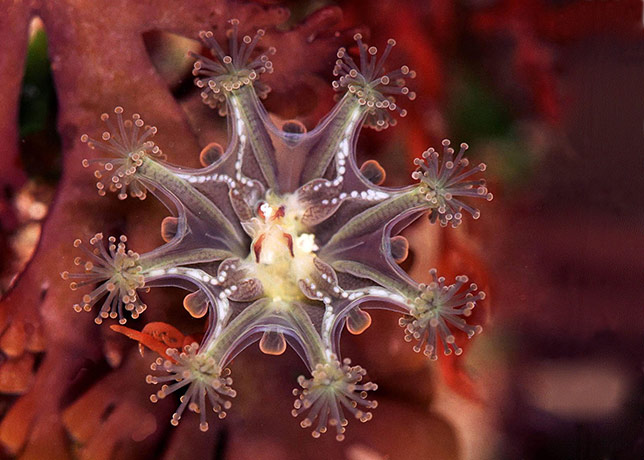TOP STORIES 
A spate of dove die-offs in Texas is likely caused by a parasite, according to state biologists.
Texas Parks and Wildlife is blaming avian trichomoniasis for the die-offs, observed recently from South Texas to the Panhandle.
“It’s a fairly common occurrence, but folks should be aware of it,” said Corey Mason, TPW’s dove program leader.
Lone Star Outdoor News - www.lsonews.com
01 July 2010
Photo courtesy of Lone Star Outdoor News
Location: Texas, USA - Map It
01 July 2010
Photo courtesy of Lone Star Outdoor News
Location: Texas, USA - Map It

. . . According to David Morin, a marine mammal specialist with the National Oceanic and Atmospheric Administration, the whale was first spotted by the U.S. Coast Guard on Tuesday in the waters between New Jersey and Delaware.
. . . Morin said there is no evidence currently available that could indicate a cause of death; however, according to NOAA's website, ship collisions and entanglement in fishing gear are the most common human causes of serious injury and mortality of the species.
Initial inspection of the carcass indicated the whale is a sub-adult or adult male, which leads researchers to believe its cause of death was not natural.
The Daily Times - www.delmarvanow.com
02 July 2010
S Lake
Photo credit: J King
Location: between New Jersey and Delaware, USA - Map It
02 July 2010
S Lake
Photo credit: J King
Location: between New Jersey and Delaware, USA - Map It

 What is killing Argentina's right whales?
What is killing Argentina's right whales?Fatal strandings of southern right whales around Argentina's Valdes Peninsula have soared in recent years, and worried scientists are not sure why, the International Whaling Commission heard Friday.
From 1971, when systematic monitoring began, only a relative handful of whale deaths were reported over the next three decades.
Starting in 2003, however, the mortality rate began to soar: from 31 that year, to 47 in 2005, 83 in 2007, 95 in 2008 and 79 last year, the IWC's scientific committee reported. ... Three causes, possibly in combination, have been fingered as possible culprits.
Google News - www.google.com/hostednews [Source: AFP]
26 June 2010
M Hood
Photo credit: J Mabromata/AFP
26 June 2010
M Hood
Photo credit: J Mabromata/AFP
 Wildlife rescue under way as oil gushes into Gulf
Wildlife rescue under way as oil gushes into GulfAs efforts to contain the largest oil spill in U.S. history continued with no immediate end in sight, the grim toll on wildlife along the Gulf Coast was slowly being tallied.
The government's wildlife impact assessment as of June 23 showed that 1,024 birds, 407 sea turtles, and 47 marine mammals had been found dead along the Alabama, Florida, Louisiana, and Mississippi coasts. Nearly 900 animals had been recovered alive, but less than a hundred had so far been returned to the wild.
Not all the injuries and deaths were attributable to the spill, the report stated, and the causes of death would be determined at a later date.
JAVMA News - www.avma.org/onlnews
01 July 2010
RS Nolen
Photo courtesy of UC-Davis
01 July 2010
RS Nolen
Photo courtesy of UC-Davis
More Gulf Oil Spill News
>>> Threatened whale sharks seen in Gulf oil spill
>>> Gulf farmers asked to flood fields for migrating birds
>>> How Endangered Species Are Faring In The Gulf [includes audio]
>>> Threatened whale sharks seen in Gulf oil spill
>>> Gulf farmers asked to flood fields for migrating birds
>>> How Endangered Species Are Faring In The Gulf [includes audio]
TOP READ LINKS FROM LAST WEEK
News
- In the Spotlight - Sources for Wildlife Disease Literature
- Study will track shared habitats, diseases between species
- Don't kill oiled birds, say UCDavis wildlife experts
- BP accused of killing endangered sea turtles in cleanup operation
- Anthrax killed hippos - experts
- Heading off white-nose fear
- Zoonotic Diseases: WSU Breaks Ground On School For Global Animal Health Building
- U.S. Fish and Wildlife Service Develops Strategy to Help Waterfowl and other Migratory Birds Weather the Gulf Coast Oil Spill
- 2-year-old cow moose picks area man’s yard to lie down and die
- TB fears re-ignited after badger vaccination plan abandoned
- Can Preening Contribute to Influenza A Virus Infection in Wild Waterbirds?
- Mapping the risk of avian influenza in wild birds in the US
- Screening for several potential pathogens in feral pigeons (Columba livia) in Madrid
- Model-Based Evaluation of Highly and Low Pathogenic Avian Influenza Dynamics in Wild Birds
OTHER WILDLIFE HEALTH RELATED NEWS
Photo credit: D McCoy/mccoyphoto.com
 The week in wildlife [image gallery]
The week in wildlife [image gallery]- In pictures: Jersey birds [program to restore Jersey's coastline, including its birds; image gallery]
- Harbour seals 'pupping earlier'
- Wildlife Trade Regulation Needed More Than Ever
- Study suggests more fish than thought may thrive in the ocean's depths
- Smallest whale population identified
Wildlife-Human Health Connection
- Discovery of a Hepatitis C-Related Virus in Bats May Reduce Outbreaks in Humans
- Bees Help to Beat MRSA Bugs
It Ain't All Bad News




